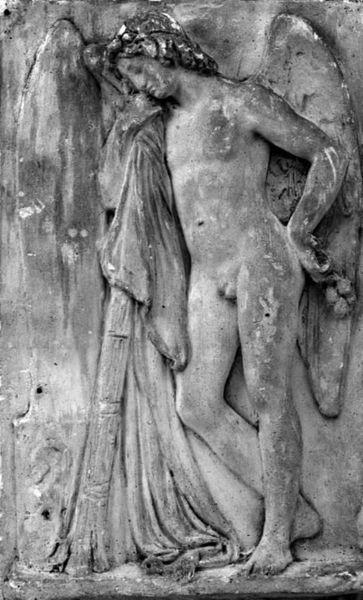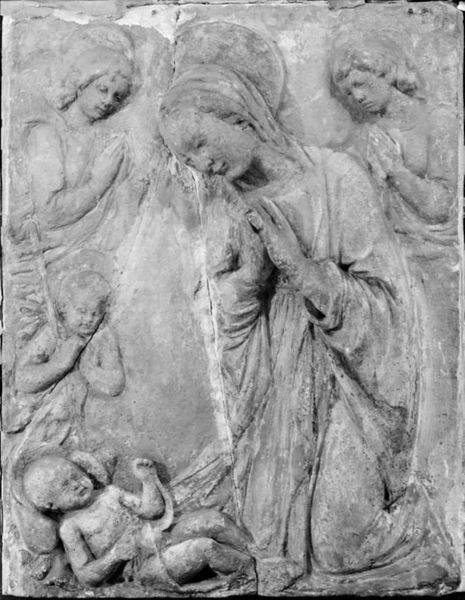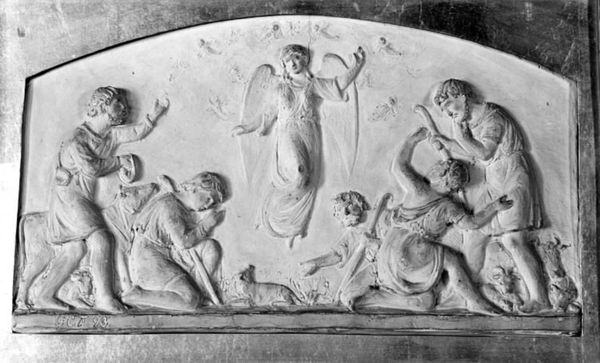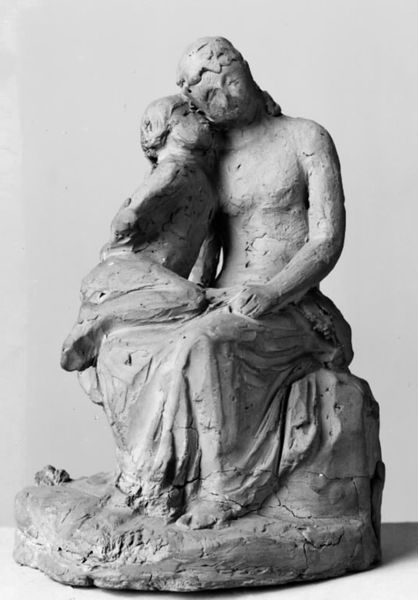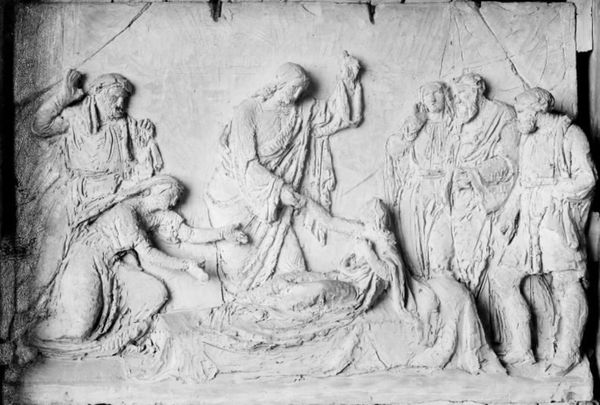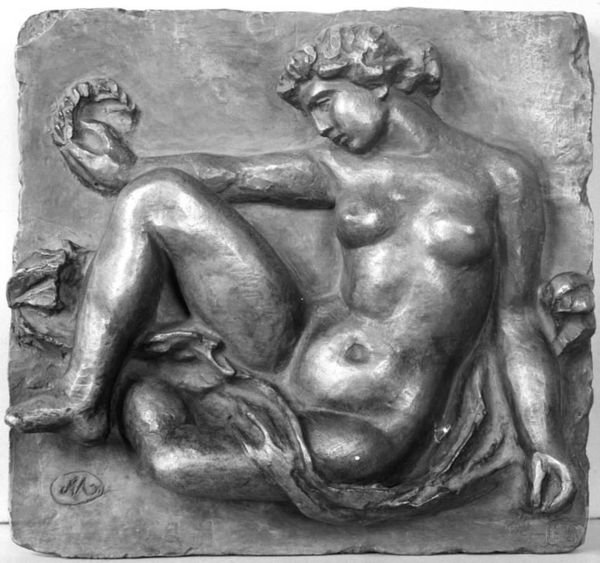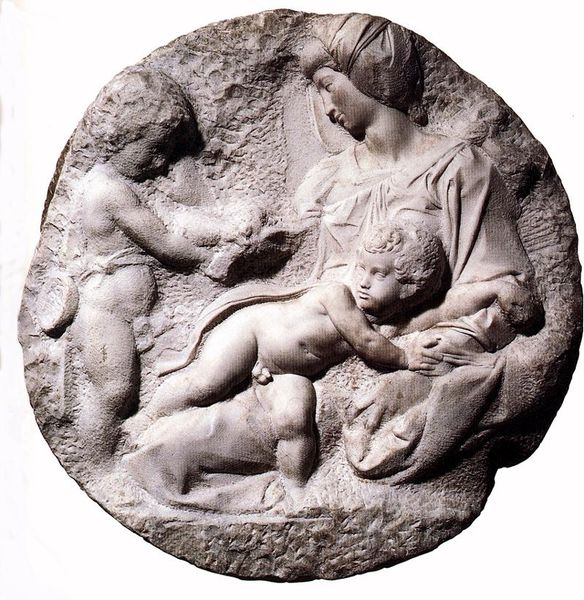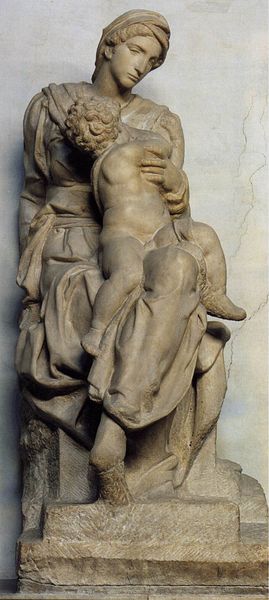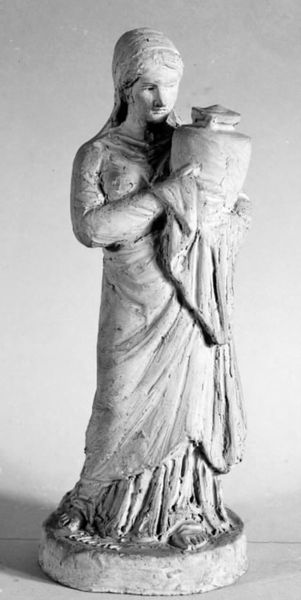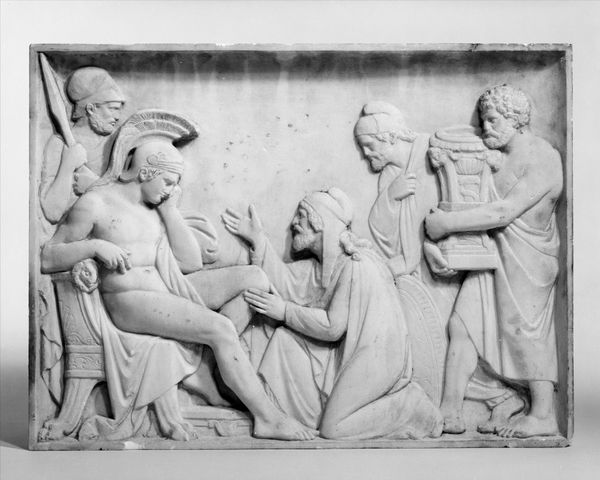
Amor og Psyke. Siddende Psyke omfavnes og kysses af den bevingede Amor 1813 - 1868
0:00
0:00
sculpture, marble
#
sculpture
#
figuration
#
ancient-mediterranean
#
sculpture
#
romanticism
#
black and white
#
marble
#
nude
#
statue
Dimensions: 21 cm (height) x 19 cm (width) x 4.5 cm (depth) (Netto)
Curator: Here we have "Amor and Psyche," a marble sculpture created by H.W. Bissen, likely somewhere between 1813 and 1868. It's part of the collection here at the SMK. Editor: It’s striking. The surface is quite textured, especially considering the subject is about the intimate embrace of lovers. It’s tender, yet feels grounded in a physical reality of rough-hewn stone. Curator: Bissen was, of course, working within the legacy of Neoclassicism and Romanticism. The sculpture takes its subject from ancient Greek mythology, illustrating the love story of Cupid and Psyche, but renders it in a style that feels almost… tactile. Editor: Tell me more about the choice of marble. Its very substance brings associations with classical art, the labor involved in its extraction, shaping, and eventual transportation, as a luxury good in Danish society. Curator: Absolutely. Marble has a long history as a prestige material, immediately lending an air of importance and permanence. Sculptures like this one served both aesthetic and socio-political functions. Displaying it showed your taste but also your social standing. Think of the conversations it may have started! How visitors interpreted the classical stories, their own morality reflected in the sculpture itself. Editor: And the artistic lineage Bissen wanted to project. Romanticism, in Denmark, was a moment when artists began thinking of “national” artistic qualities, even when appropriating historical forms. In Bissen’s time the debates over the public funding and purpose of art were as fierce as they are now! Curator: It does encourage consideration of what Bissen's target audience was, his cultural context, and how the sculpture would have functioned within it. The embrace itself, the very intimacy captured in a public artwork— it generates layers of questions about desire and spectatorship in 19th century. Editor: Seeing how the artist has shaped the marble is powerful and definitely allows the audience to reflect on their position. Curator: It is also relevant what isn't here. We can consider how and if this would reflect changing societal tastes and emerging possibilities for artists and institutions in Denmark. Editor: Well, it's definitely a piece that resonates beyond its initial impression, reminding us that beauty can arise from complex conditions.
Comments
No comments
Be the first to comment and join the conversation on the ultimate creative platform.
